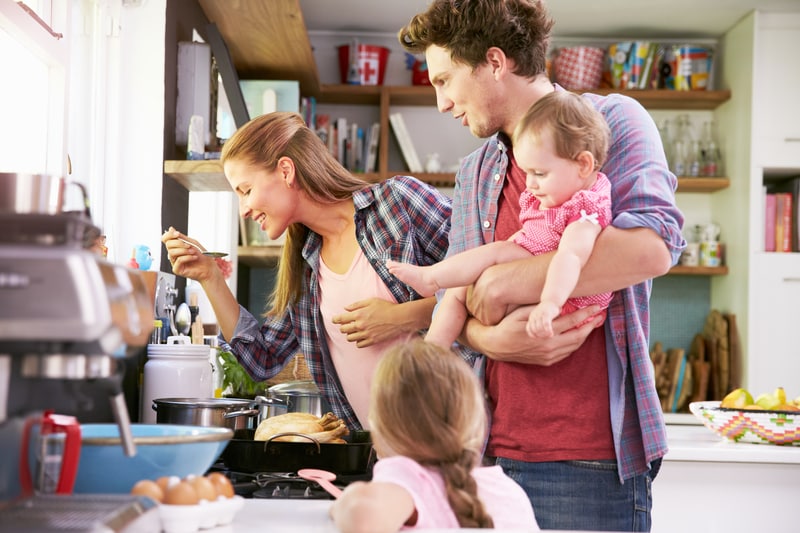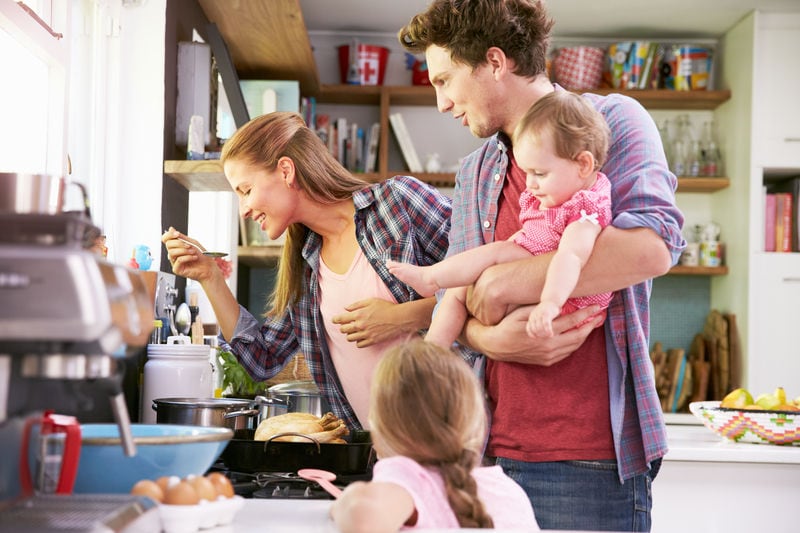Do you love cooking?
Whether indulging in a slow cooked lamb dinner with all the trimmings or baking up a storm, the right cooking appliance will certainly make the world of difference.
Since cookers aren’t something you buy every day, you might be feeling a little left in the dark as far as kitchen appliance technology goes. An old-world Aga range cooker may have sufficed before now, there is more out there.
This comprehensive rundown will get you up to speed!
There are a few things you need to know about the different types of cookers out there in the world of "things you can buy." The right kitchen appliances can go a long way to helping or hindering your culinary efforts.
So, let’s compare cookers and their features.
What Are the Different Types of Cooker?
There are three standard cooker options. This doesn’t mean your choices are limited though! When it comes to freestanding cookers especially, there are countless variations and features for every preference and price range.
Let’s get one thing straight first: what’s the difference between a cooker and an oven?
Hobs and ovens are often sold as separate appliances. Ovens themselves are a whole new appliance category that includes eye-level, built-in, and under-counter. These oven types integrate seamlessly into your kitchen cabinets.
A freestanding cooker or stove is one complete, self-contained appliance with an oven section that sits beneath a hob (also known as stovetop or cooktop). Freestanding cookers are usually more affordable than built-in ovens and hob units.
A range cooker is a larger type of freestanding cooker that comes with a greater capacity. Range cookers usually have five (or more) burners instead of four, and the oven part comes with added features too.
Let’s move on with a simple comparison of the three basic types of cookers.
What Are the Three Types of Cookers?
Gas cooker
Electric cooker
Dual fuel cooker
1. Freestanding Gas Stove
If you choose a gas cooker, you can expect instant heat from the flame on the hob. And, you get a great measure of control over your cooking temperatures. The downside is that a gas hob isn’t super easy to clean.
Generally speaking, gas costs less to run. Plus, you can get high-efficiency burners now that use less gas and have added safety features. Even if you choose a low to mid-range option, it’s easy to see when a gas flame is lit, and when there is a problem with one of the burners. When there’s a problem with an electric hotplate, you might not notice until it’s been too hot or too cold for far too long.
As far as the oven part of a gas cooker (freestanding) goes, the cavity will heat up nice and quickly. However, in most units, since heat rises, the top of a gas oven gets hotter than the lower part. Cooking with different heat zones may take a bit of getting used to, but, as long as you buy a quality appliance, your dishes should still turn out perfectly.
2. Freestanding Electric Stoves
A freestanding electric stove comes with great advantages of its own. For one thing, many people prefer the look of an electric stovetop.
What should you expect in terms of cooking functionality?
Electrically powered hob types take more time to heat up than gas burners and you have to rely on the built-in indicators to let you know that the plates are hot. With electric hobs, temperature changes aren’t instant, and you need to be mindful of the residual heat that stays behind after you’ve finished cooking.
The ovens of an electric cooker come in convection, conventional, or multifunction variations.
Here’s a quick rundown:
Convection Ovens
Cooking is a bit quicker as they don’t usually need to be pre-heated. Heat is evenly distributed with a fan.
Conventional Oven
The older, traditional type of oven. Heat is produced in zones by electric elements on the top, bottom and sides. They usually need to be preheated.
Multifunction Electric Ovens
A combination of fan and conventional heating, offering greater versatility. You can choose if you’d like to use the grill elements and fan separately or together.
3. Freestanding Dual-Fuel Ovens
What if you appreciate the advantages of a gas hob, but would prefer an electric oven? That’s where dual fuel cookers come in. A combination of a gas and electric cooker is quite popular these days and you really get the best features of both. Let’s use Beko’s multifunctional range cooker as an example.
Here are some of its features:
High-efficiency gas burners
Four gas burners plus one wok burner
Halogen illuminated oven
122-litre oven
Automatic gas cut-off safety feature
Multifunctional oven with electric grill and conventional cooking
What type of cooker is best? And, what’s better - gas or electric? Again, that’s a matter of personal preference.
General opinion says that gas preserves the natural flavours and moisture of foods better, while electric cookers provide more even temperatures. The answer to this question depends on which of the two different cooking styles you prefer.
Some people swear by gas. However, you might not like that style of cooking. Moreover, newer technologies have improved the energy consumption of electric cookers. A lot will depend on your budget, the style of your kitchen, and how you cook.
What Are the Different Types of Electric Cooker?
Now that we’ve discussed the different types of stoves available, let’s focus on the variations within the electric cooker range.
When choosing an electric hob type you'll be selecting between solid plate, ceramic and induction. (No matter your choice, your kitchen will certainly benefit from a cooker hood above these appliances to catch steam and odours.)
Solid Plate Hobs
These are the more traditional type of stovetops. You should note that they take a bit of time to heat up and cool down. Additionally, they are the least energy-efficient to run, but they are the cheapest to buy upfront.
Ceramic Hobs
A ceramic hob is heated electrically just like solid plates; the difference is that they are more modern. The ceramic glass looks much more attractive, wipes clean easily, and often includes additional safety features.
If you’ve been comparing different types of cookers, and like the look of ceramic cooktops, take a look at Beko’s stainless steel multifunction vitroceramic freestanding stove.
Induction Hobs
Technically, induction hobs shouldn’t be classed as electric hobs because their technology works very differently. It’s a classification on its own - electromagnetism. It’s powered by electricity, but the heating process happens magnetically. You lift the pan, the magnetic connection is broken, and cooking stops.
Putting things simply, with an electric hob and gas burner, a heat exchange takes place. You put your pan on the hot surface and it heats up, whereas electromagnetism creates heat within the pan itself. So, when the induction plate is not in contact with a metal pan, the surface is cool.
The magic of induction cooking is that heating is quick and temperature adjustments are effortless. Plus, it’s a safer, energy-efficient, and easy to clean option. The only real downside to induction cookers is that you might have to invest in a whole new set of cookware.
Since induction relies on the forces of magnetism to work, only certain types of cookware, such as cast iron or stainless steel, will activate the hotplate. You can use a magnet to check if any of your cookware will be suitable for an induction hob. If a magnet sticks to the bottom of a pot or pan, then you know that item will work.
What Are induction range cookers? An induction range cooker is simply an electric range oven with an induction hob on top.
What Other Oven Features Are There?
You can get ovens with a few handy features in addition to the standard grill, defrost, and fan settings.
For example, Beko ovens feature halogen illumination. You get a clear view of how your cooking is doing without having to open the door. You don’t have to worry about losing heat, or risk a flopped souffle!
Some ovens come with timer control. This means your oven will turn itself off once the set cooking time is complete. It might sound like a small thing, but it can be a significant convenience. You can multitask as much as you want while the potatoes are roasting, they won’t get burnt if you forget about them!
Who likes cleaning their oven? A self-cleaning oven can save you much time and elbow grease. A steam-cleaning feature is great because it uses water vapour to loosen grime and drastically cut your scrubbing time down!
Kiss The Cook
"It’s made with love" may be your secret ingredient that distinguishes your cooking, but having the right cooking appliance can take your meals to the next level!
The considerate engineering found in modern cookers has been cleverly designed to support your culinary skills. Understanding a little about the types of cookers available can really help you in the kitchen. The best cookers for you will depend on the type of cooking you do, the amount of space you have, and of course, your budget.
If you have any questions, or if you’re interested in a product comparison, contact Beko support today!


